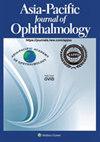Update on pediatric cataract surgery
IF 4.5
3区 医学
Q1 OPHTHALMOLOGY
引用次数: 0
Abstract
Cataracts in infants and children are comparatively rare, but they remain an important cause of potentially lifelong visual impairment, largely because of associated deprivation amblyopia. This is particularly seen in children missed by screening programs and thus presenting late for treatment. However, advances in diagnosis, surgical techniques and amblyopia management have improved the prognosis for most children seen with this condition. This comprehensive review focuses on all aspects of the care required to optimize outcomes. It covers modern genetic investigations, performed to precisely determine underlying cataract etiology, and discusses the use of outcome-based evidence to guide the timing of surgical intervention. The paper also outlines the options available to clinicians for post-operative refractive error correction and compares indications, risks and benefits for the use of contact lenses, spectacles and intraocular lenses (IOL). The challenge of choosing the most appropriate dioptric power of IOL to implant into a growing eye is discussed, as is consideration of types of IOLs that can be considered and the surgical techniques needed. Evidence-based approaches to the clinical management of amblyopia, glaucoma and visual axis opacification, the three most common complications seen following pediatric cataract surgery, are reviewed. Two specific conditions associated with pediatric cataract are discussed in detail--persistent fetal vasculature and ocular trauma. Strategies for assessment, management and surgical treatment of these conditions are reviewed.
儿童白内障手术最新进展。
婴儿和儿童白内障相对罕见,但它们仍然是潜在的终身视力损害的重要原因,主要是因为相关的剥夺性弱视。这在被筛查项目遗漏的儿童中尤其明显,因此姗姗姗姗来。然而,诊断、手术技术和弱视治疗的进步改善了大多数弱视患儿的预后。这项全面的审查侧重于优化结果所需的护理的各个方面。它涵盖了现代遗传学调查,精确地确定潜在的白内障病因,并讨论了使用基于结果的证据来指导手术干预的时机。本文还概述了临床医生术后屈光不正矫正的选择,并比较了使用隐形眼镜、眼镜和人工晶状体(IOL)的适应症、风险和益处。讨论了选择最合适的屈光度人工晶状体植入生长中的眼睛的挑战,以及可考虑的人工晶状体类型和所需的手术技术。弱视、青光眼和视轴混浊是儿童白内障手术后最常见的三种并发症,本文综述了以证据为基础的治疗方法。本文详细讨论了与儿童白内障相关的两种特殊情况——持续的胎儿血管和眼外伤。评估策略,管理和手术治疗这些条件进行审查。
本文章由计算机程序翻译,如有差异,请以英文原文为准。
求助全文
约1分钟内获得全文
求助全文
来源期刊

Asia-Pacific Journal of Ophthalmology
OPHTHALMOLOGY-
CiteScore
8.10
自引率
18.20%
发文量
197
审稿时长
6 weeks
期刊介绍:
The Asia-Pacific Journal of Ophthalmology, a bimonthly, peer-reviewed online scientific publication, is an official publication of the Asia-Pacific Academy of Ophthalmology (APAO), a supranational organization which is committed to research, training, learning, publication and knowledge and skill transfers in ophthalmology and visual sciences. The Asia-Pacific Journal of Ophthalmology welcomes review articles on currently hot topics, original, previously unpublished manuscripts describing clinical investigations, clinical observations and clinically relevant laboratory investigations, as well as .perspectives containing personal viewpoints on topics with broad interests. Editorials are published by invitation only. Case reports are generally not considered. The Asia-Pacific Journal of Ophthalmology covers 16 subspecialties and is freely circulated among individual members of the APAO’s member societies, which amounts to a potential readership of over 50,000.
 求助内容:
求助内容: 应助结果提醒方式:
应助结果提醒方式:


